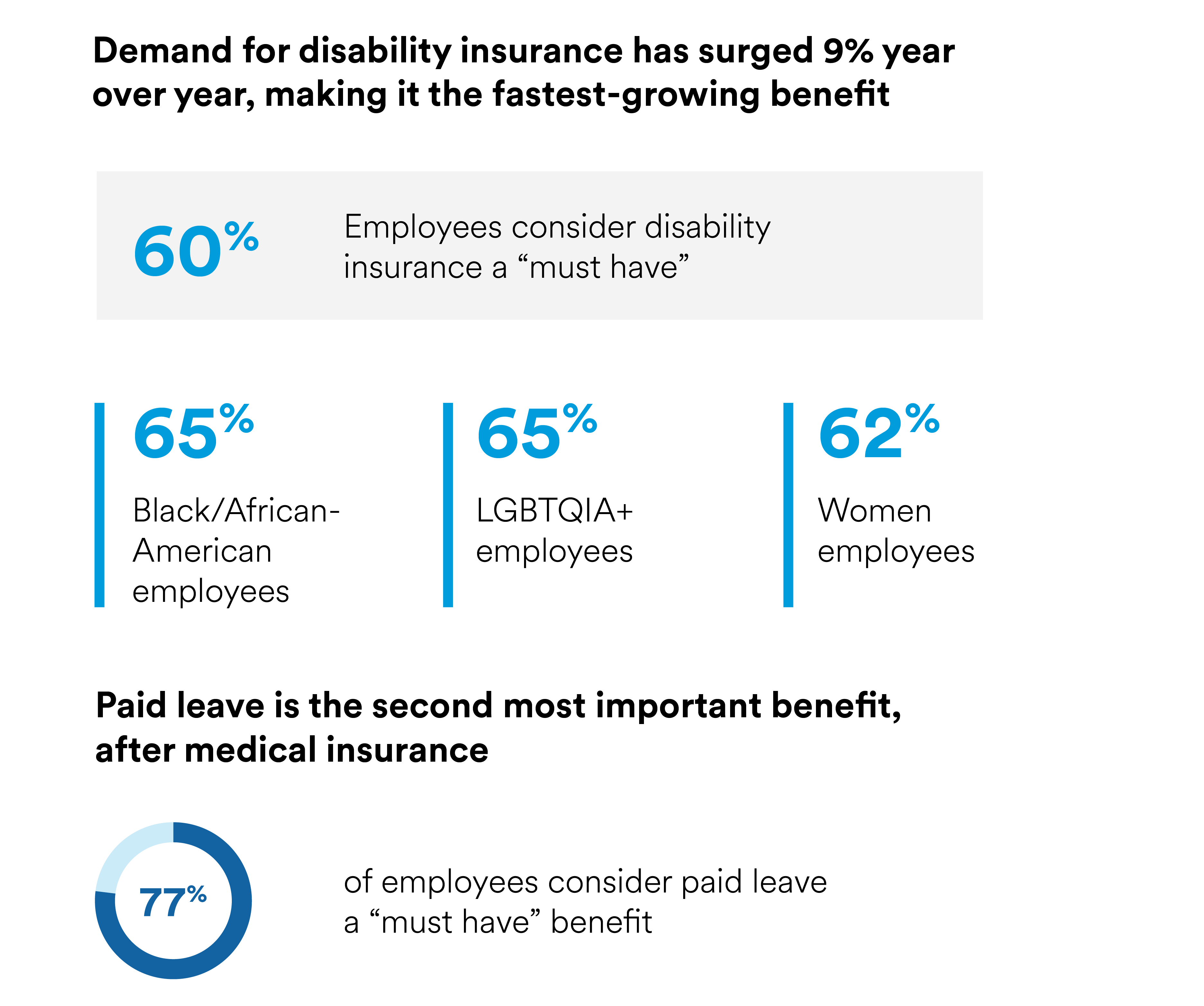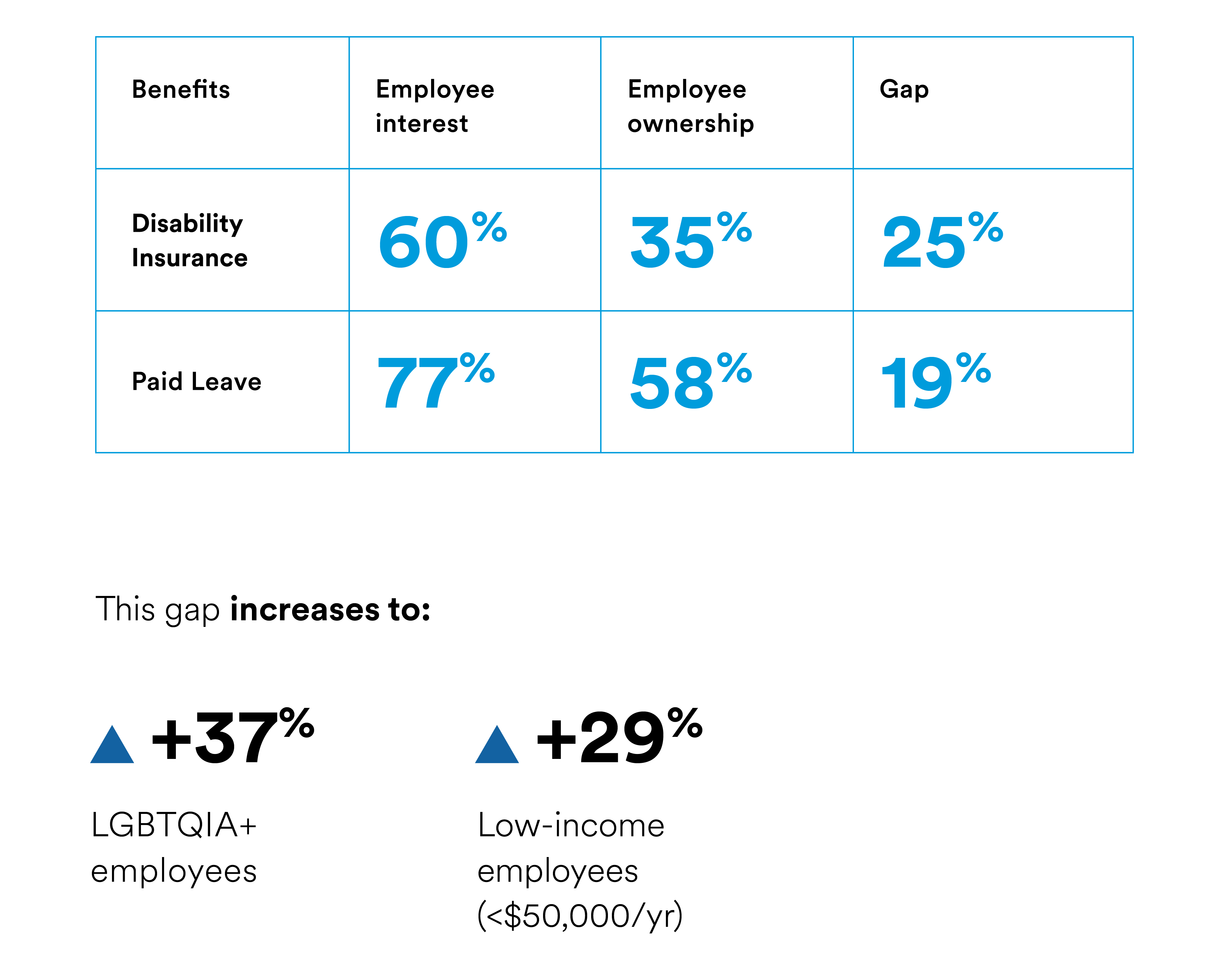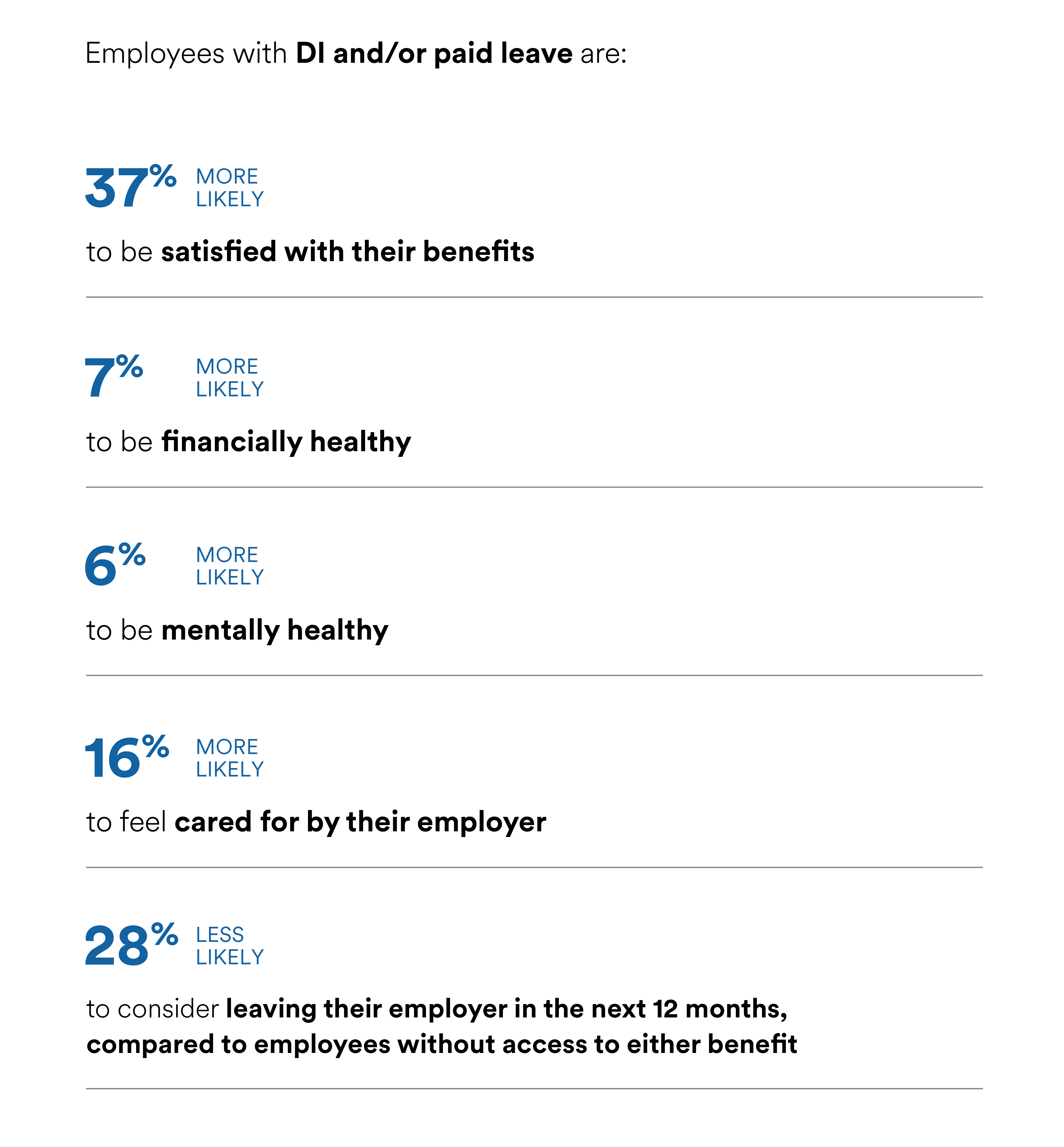The Whole Employee
The critical role for disability insurance and paid leave in demonstrating employee care
Key findings
- Benefits satisfaction has hit a 10-year low, and employees are seeking a broader mix of wellness programs and benefits to meet their needs.
- Disability insurance (DI) and paid leave are among the most in-demand benefits and have become essential for employees today.
- Employers have an opportunity to bolster loyalty by offering DI and paid or unpaid leave, as well as providing flexibility and support when employees need to take time away from work.
Wellness programs and benefits have traditionally been a strong driver of loyalty and play a key role in boosting loyalty and satisfaction. But the unique stressors of the past few years have raised the stakes for what employees expect from their benefits — and many crave more support from their employers.
Benefits satisfaction hit a 10-year low in 2023, and just 6 in 10 employees (61%) now report feeling satisfied with their benefits according to data from MetLife’s 21st Annual U.S. Benefit Trends Study . Employees have also raised the stakes for what’s considered essential when it comes to benefits. The average employees’ list of “must-haves” now includes 8.3 benefits, a 25% increase over the 6.6 listed in 2019.
In particular, employees seek benefits that allow them to take time away from work when they need to — without sacrificing their financial health. And disability insurance (DI) and paid leave have emerged as some of the most in-demand “must-have” benefits for employees today:
These benefits are especially critical for creating inclusive benefits packages that meet the needs of a heterogeneous workforce. Employees from historically marginalized backgrounds — including women, Black and hispanic employees, and members of the LGBTQIA+ community — are significantly more likely than average to list DI and paid leave as “must-have” benefits. And employees that own DI are 26% more likely to say their benefits package is inclusive than those that don’t.
Yet, many employees face an uphill battle to access DI and leave
Despite heightened demand for DI and paid leave — as well as unpaid leave — employers have struggled to provide these benefits. Instead, the proportion of workers offered disability insurance has fallen from 58% in 2019 to 45% in 2023. And less than 3 in 5 employees are satisfied with their benefits that enable them to take time away from work.
Overall, employees today face a significant gap between interest and ownership for both DI and paid leave:
Offering DI and leave bolsters employee wellness, loyalty and care
The demand for DI and paid leave fits into employees’ larger need to manage their work-life balance. These benefits enable employees to manage their work-life balance. They also help employers demonstrate care, and take a genuine interest in employees’ well-being, both at work and outside of work.
As a result, offering DI or leave significantly boosts outcomes for employees and employers:
How to boost talent management outcomes with DI and leave
Three strategies to drive better outcomes for employers — and their workforce.
1. Offer access to DI and leave
As benefits satisfaction decreases, broadening benefits offerings becomes more important than ever. Ideally, employees should have the option to purchase DI and leave as part of their benefits packages so those who may need to take leave can access it.
2. Focus on education and awareness to help employees understand their options
Education plays a central role in helping employees access leave, and benefits communications, in particular, can enhance outcomes for employees and employers. Employees who completely understand their benefits are 2.4 times more likely to be satisfied with their benefits that enable time away from work, and they’re significantly more likely to own and use DI, if their employer offers it.
Employers have an opportunity to support their employees with clear, tailored benefits communications that help them understand the types of leave available to them, as well as employee assistance programs (EAPs) and wellness resources that support their well-being at work and outside of work.
As more states pass their own paid family and medical leave (PFML) policies, employers can also demonstrate care by crafting resources that help employees understand the foundational support available to them and how to access those benefits.
3. Center work-life balance as a core value of the organization
Ultimately, forward-looking organizations will look beyond offering DI and leave as goals in themselves, and instead view these benefits through the broader lens of care — as a means by which to mitigate stress and burnout, and create the happy and supportive workplace that top talent expect.
To do this, employers should pair traditional benefits communications with broader messaging about the importance of maintaining a healthy work-life balance, showcasing the range of support available to employees who feel stressed, isolated or burned out. Encourage managers to discuss work-life balance with their team, ensure workload coverage that enables employees to use their leave, and consider adding vacation time as a goal in performance evaluations.
Foster a more loyal workforce by offering DI and paid or unpaid leave
A healthier work-life balance has become essential for today’s top talent — and benefits that enable employees to take time away from work have become more important than ever. And, as fewer employers offer access to DI, those who do stand to gain a competitive advantage for talent.



